The beautiful tiled street signs in Madrid are one of the city’s most distinctive features and reproductions of them are sold by the bucket-load to tourists looking to take some souvenir of their stay back with them. But did you know that these iconic tiles only date as far back as the 1990s? What might surprise you even more is that the streets themselves were only officially baptised in the 19th century. Before then, besides main thoroughfares like Calle de Alcalá, Calle del Caballero de Gracia or Calle de la Montera, the streets were known only by the nicknames given to them by locals. While this might seem an absurd state of affairs, given the political controversy some of the official names have sparked, it could be argued that the city was better off without them.
When Guilds Ruled the Streets
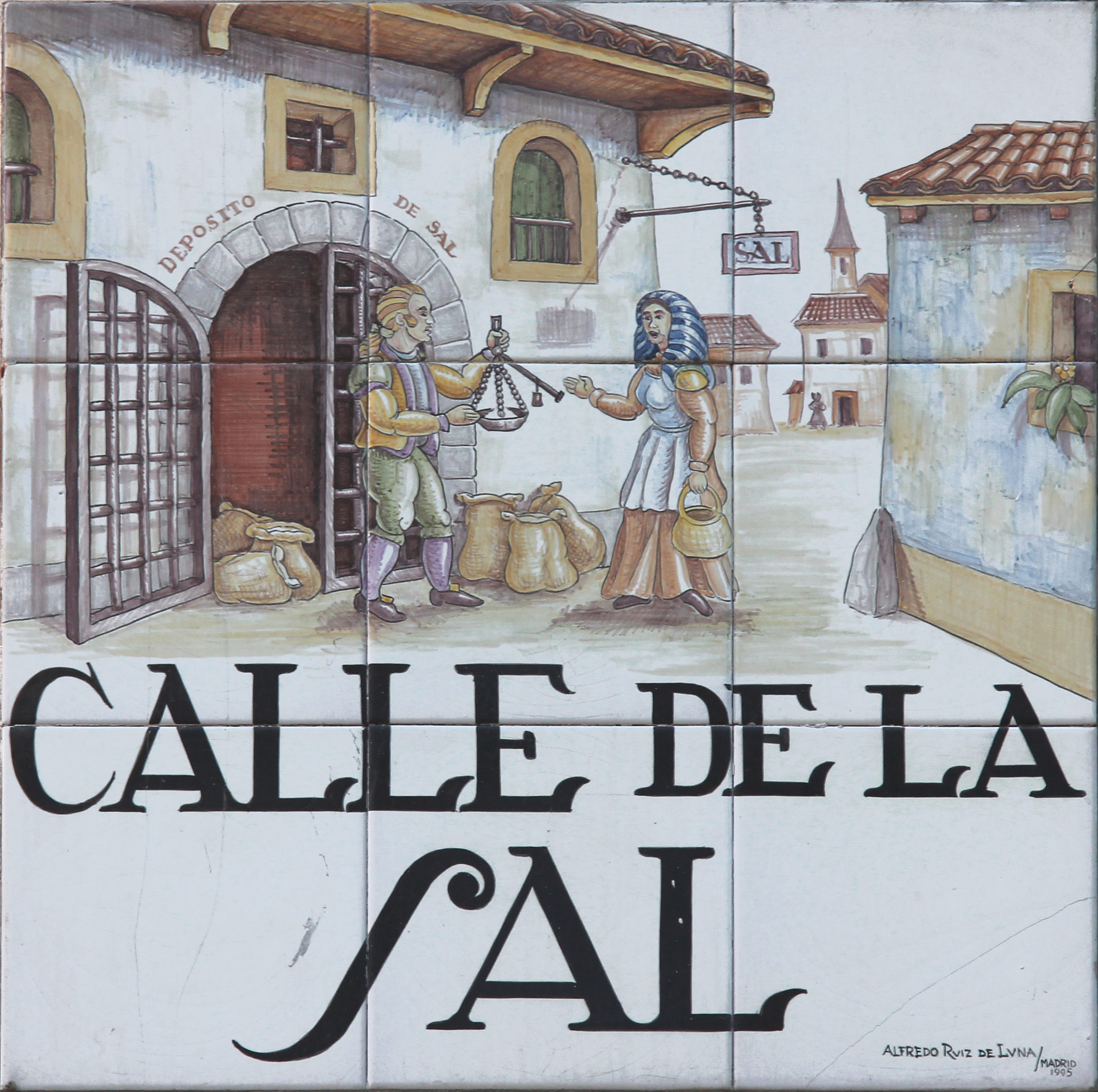
Our story begins when Madrid became the capital of Spain back in the 16th century and to some extent medieval traditions still reigned. To support the court, a huge influx of artisans descended on the town and set up shop in the narrow streets surrounding the palace (then still the Alcazar built by Mohammed I of Cordoba back in the 9th century). As was the custom at that time, artisans formed guilds, each of which congregated in certain districts. If you were after leather, for instance, you’d head to the Ribera de Curtidores, or if you wanted some buttons for your elegant threads, you’d go to the Calle de Botoneras. These weren’t the official names of the streets of course, but more or less you could navigate the city in reference to whatever trade was plied in any particular area.
A Taxing Problem
While most citizens got by pretty well with this system, it wasn’t much help to the court when it came to collecting property taxes. Not only was the city a warren of narrow medieval streets, it was also filled with Casas a la Malicia, trick houses that had been specifically built to deceive the taxman. It was only under the reign of the ever capable Charles III in the 18th century that an attempt to bring order to Madrid’s muddled streets got underway. A census was carried out and all properties inspected, so that now each block, or manzana, was marked with a ceramic tile that bore its official Visita General de la Regalía de Aposento (Royal tax code) number. If you’re in the centre of the city, you can take a look up and see them still there on many street corners.
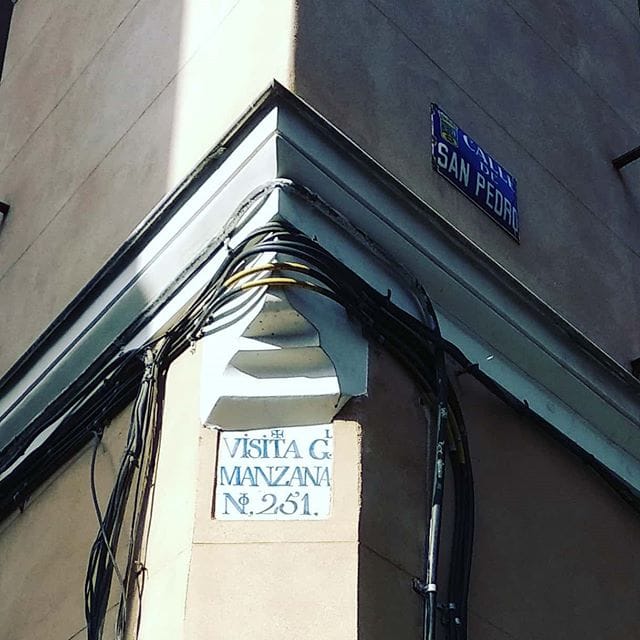
In theory, these tiles would not only help the taxman do his job, but would also enable postmen to do theirs better. In practise, as the city grew and buildings were bulldozed, while others had extensions built on them, the taxmen and postal workers found themselves in even more of a muddle, while citizens continued to address letters as before, e.g. The small house by Church X next to the bakery.
Finally, a System that Makes Sense
It was only in the 19th century when the Marqués de Pontejos became mayor that streets got their official names. Finally, street signs in Madrid would become a thing! In consultation with Ramón de Mesonero Romanos, Pontejos named streets after the old guilds, famous historical figures or events; Calle de Doctor Velasco, for instance after the founder of Madrid’s Museum of Anthropology, or Plaza Dos de Mayo, which commemorates the uprising against the French.
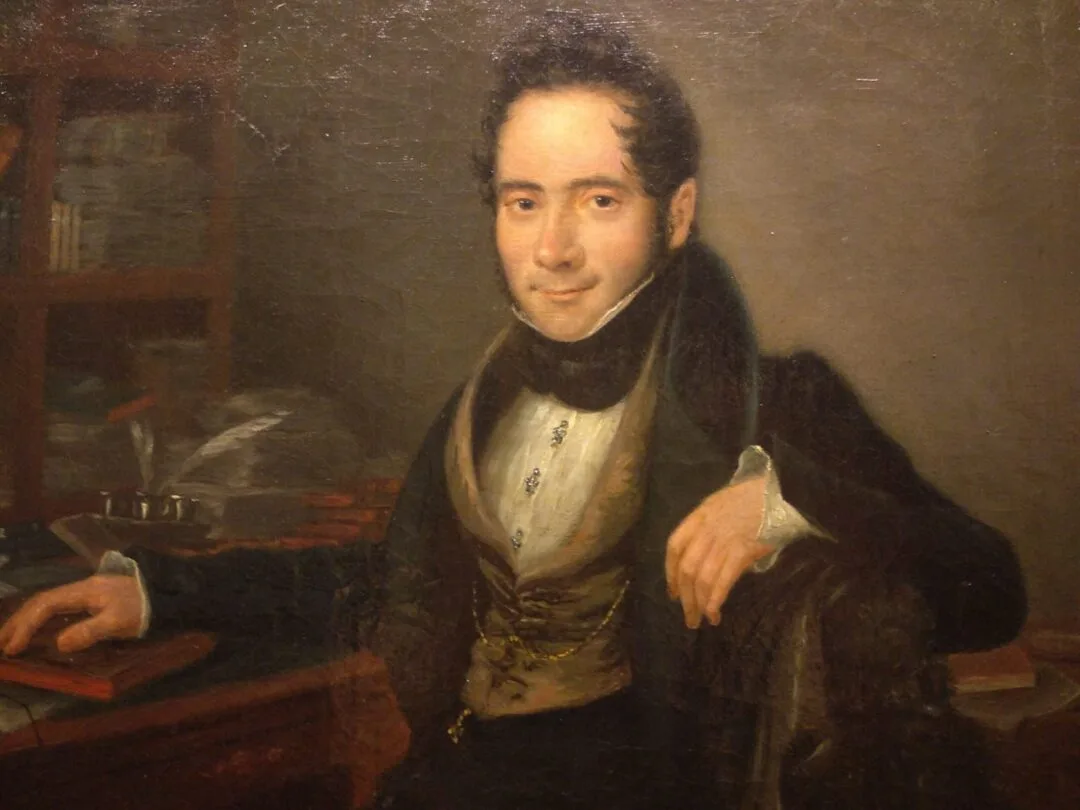
Three street signs with an interesting history
Calle de las Botoneras
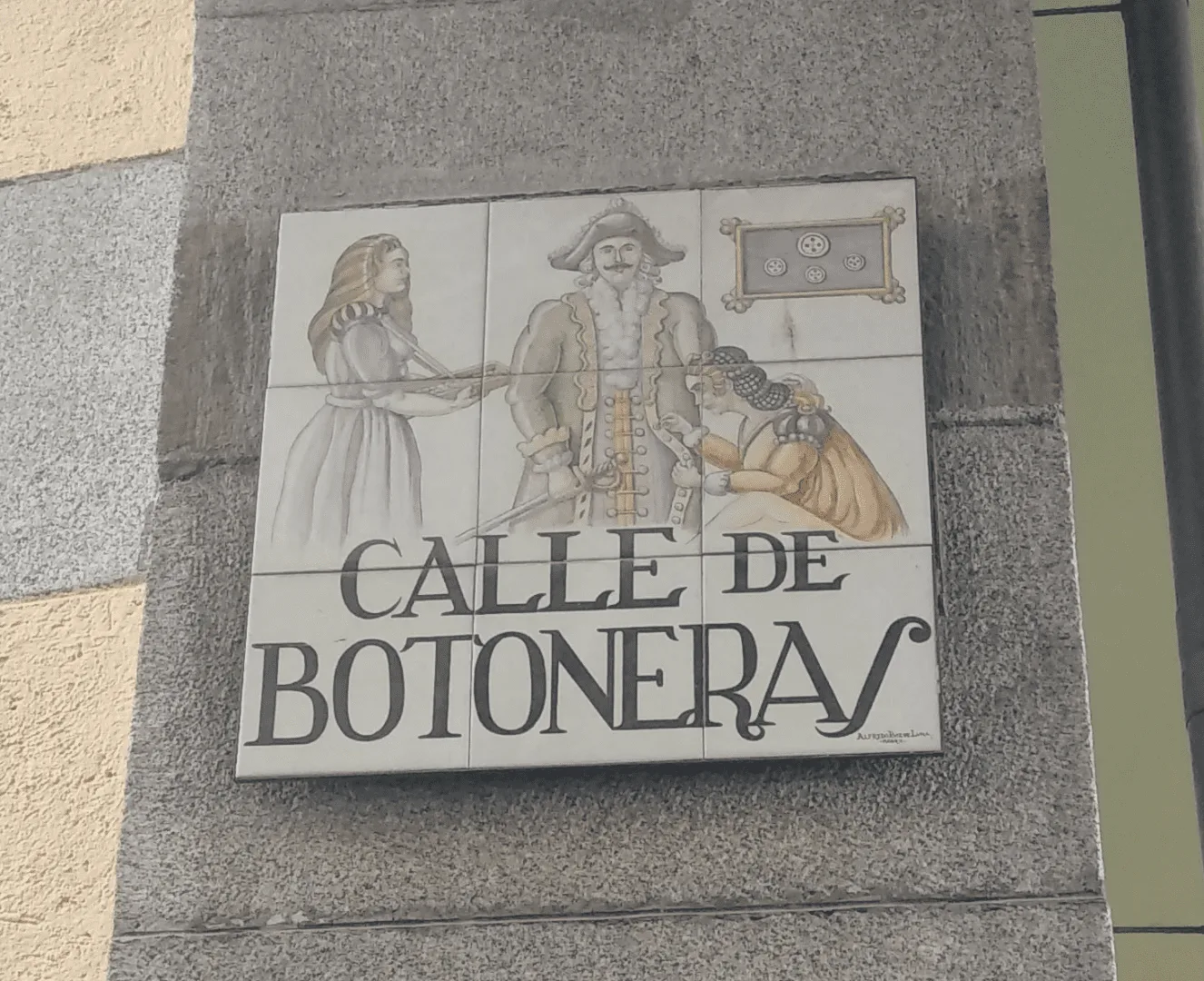
In the 17th century, the Botoneras guild was the most powerful group of businesswomen in Madrid. Located in the heart of the city, on a small street running off Plaza Mayor – now famous for its calamari sandwiches – these button makers were privy to all the court gossip, including salacious information about La Calderona, Felipe IV’s lover. Famously, when they told the queen about this affair, the king withdrew their license. It was only when Isabel of Bourbon interceded on their behalf that they were allowed to trade again.
Calle de la Esgrima
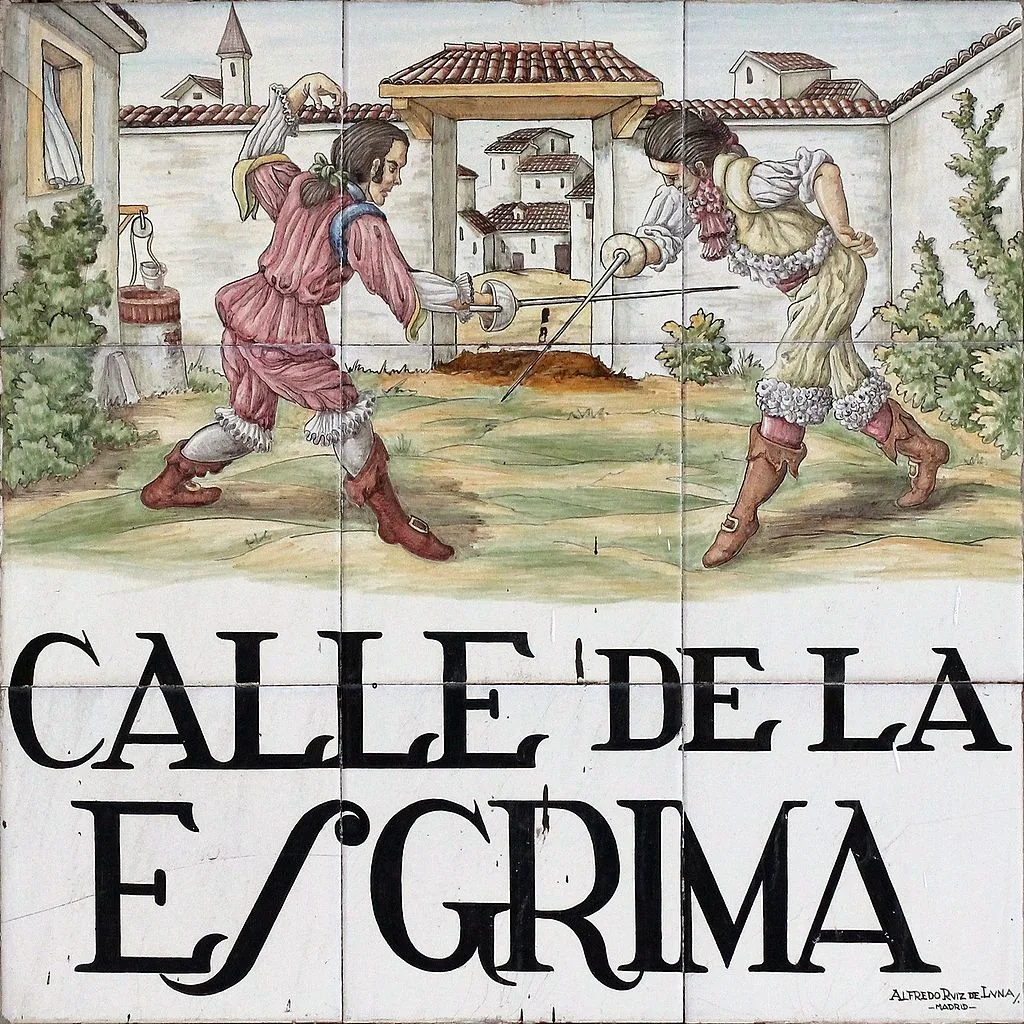
Calle de la Esgrima is just around the corner from Calle de La Espada, or the street of the sword, where a famous sword was hung outside to advertise the services of a fencing (esgrima) master. When the school relocated, it wound up on the Calle de la Esgrima where fights between pupils often devolved into brawls leading to a ban on wielding weapons in this Lavapiés street. If you’d like to read more about the swashbuckling history of sword fighting in 17th-century Spain, take a look at my post on the topic.
Calle de la Morería
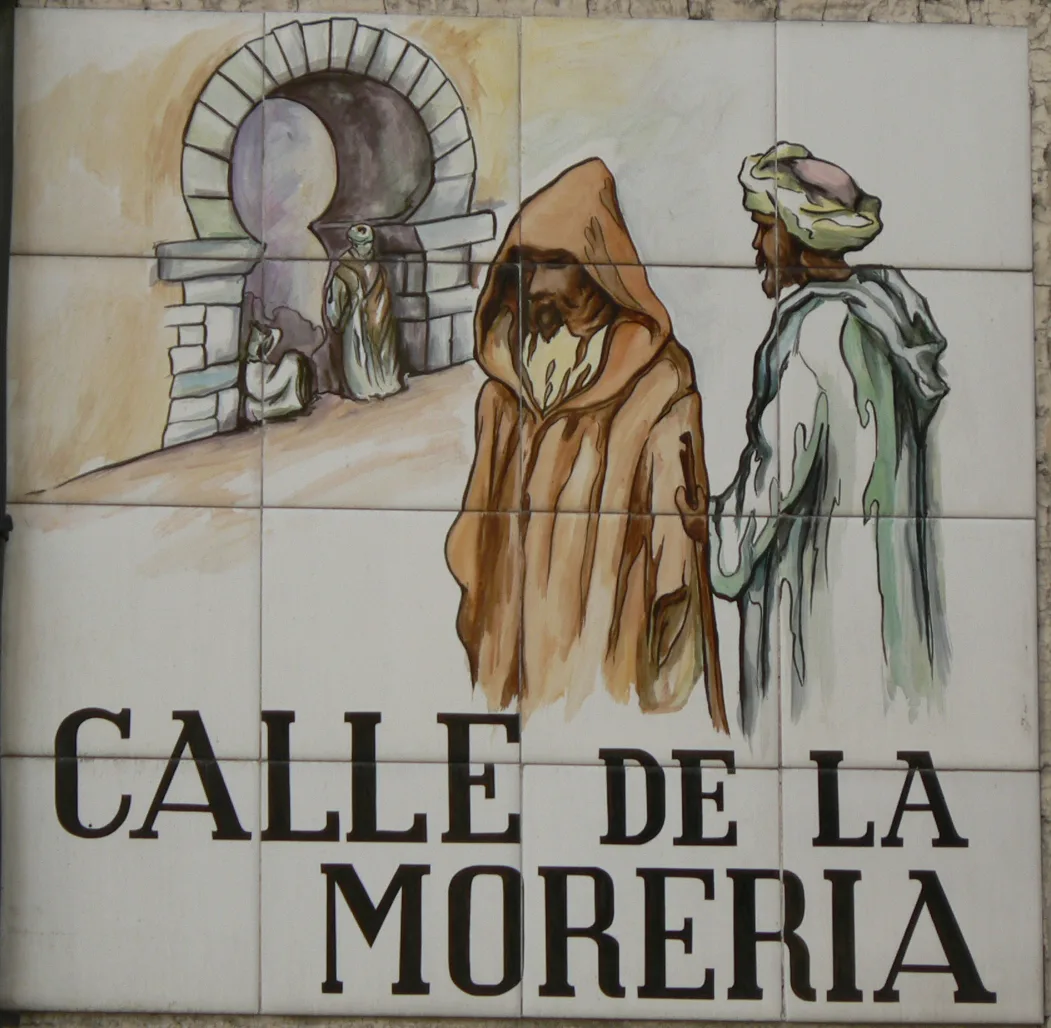
After Madrid fell to Christian troops in the 11th century, its Muslim population was initially forced to live outside the protection of the citadel’s walls. However, this now marginalized population was set to work building new city walls in the 12th century that encompassed the area we now know as La Latina – remains of this wall can be seen on Calle del Almendro. This area, known as the morería had its own Hamman, law courts, and mosque.
Calle de la Pasa
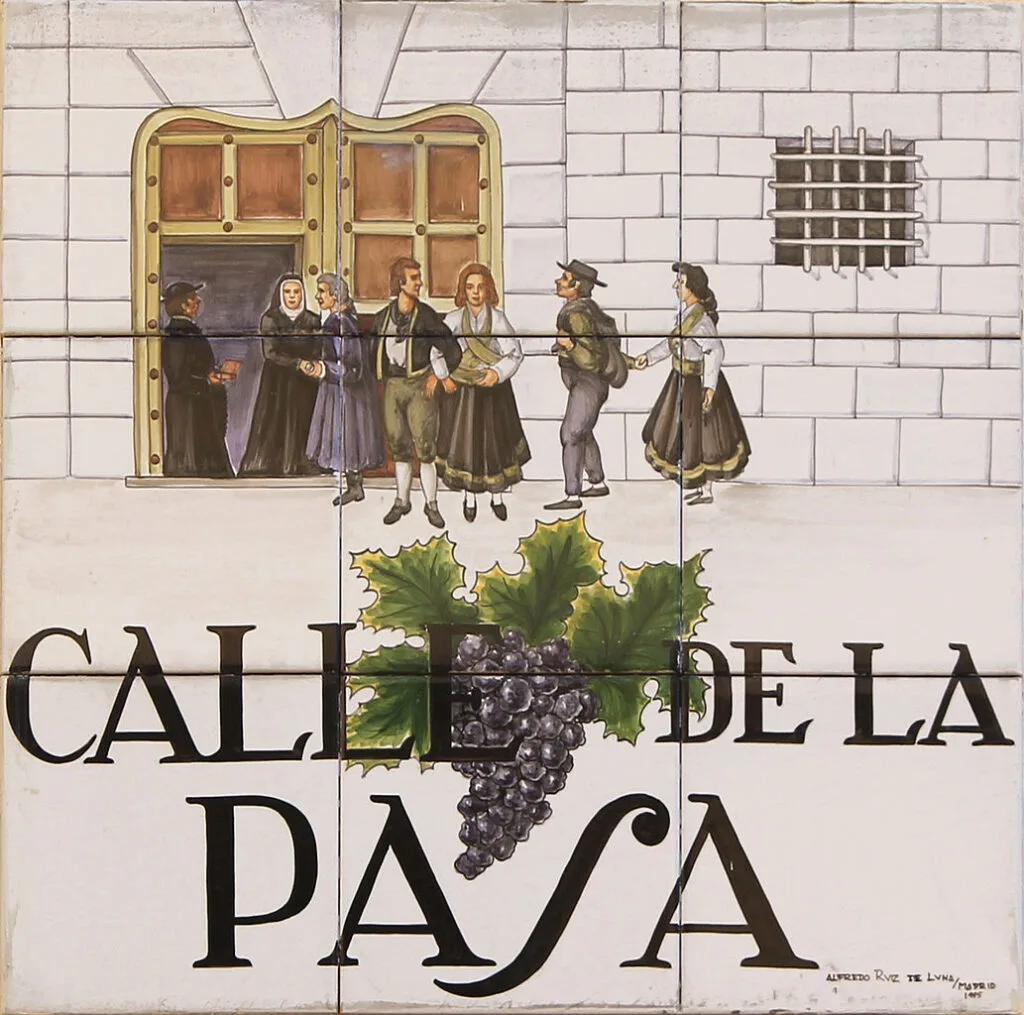
Calle de la Pasa (raisin street) carries a fascinating connection to Madrid’s marriage traditions. The street earned its name from an 18th-century custom centered around the Archbishop’s Palace at number 3, where alms in the form of raisins were given to beggars outside. More significantly, it became part of a popular saying “Quien no pasa por la calle de la pasa no se casa” (Those who don’t pass through Raisin Street won’t get married) because couples had to make an appointment at this location to get permission to get married. When the Archbishop’s residence later moved to Calle Bailén, the saying adapted to “Si no pasas por Bailén no te casas bien” (If you don’t pass through Bailén, you won’t marry well).
La Ribera de Curtidores

La Ribera de Curtidores recalls Madrid’s industrial past when leather tanners worked along this street. The name refers to the artisans who processed leather in this area, who took animal hides from the matadero or slaughterhouse located on Plaza de Cascorro. Today, this street is famous for hosting El Rastro, Madrid’s most popular flea market and the name Rastro refers to the trail of blood that once ran down what is now the main drag of the market.
Manuela Malasaña
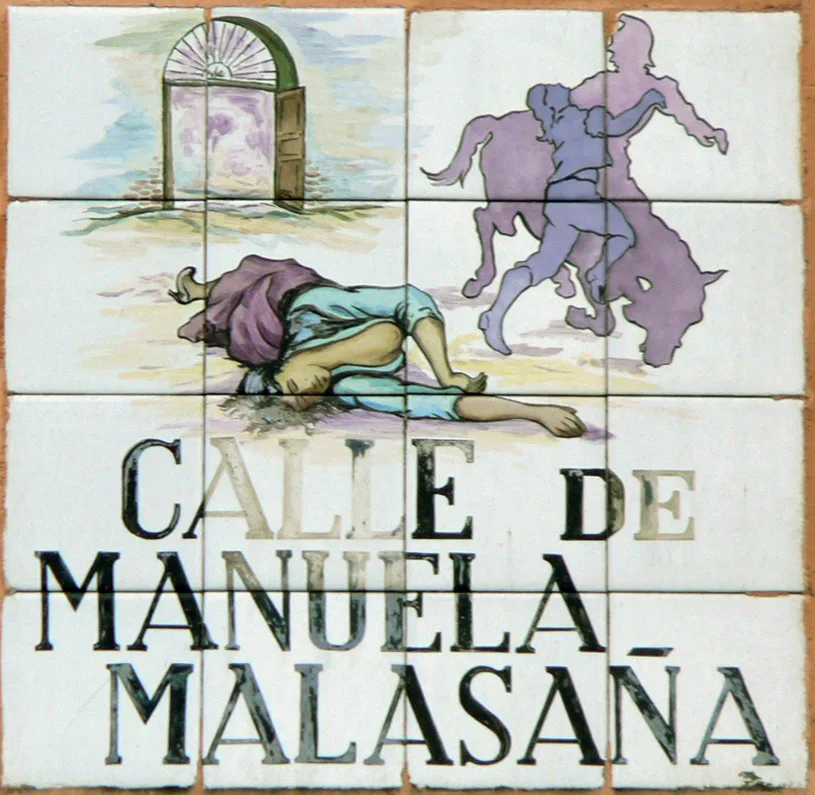
Manuela Malasaña represents a more recent and poignant piece of Madrid’s history. The street honours a young seamstress who became one of the martyrs of the May 2, 1808 uprising against French occupation. According to some accounts, 15-year-old Manuela was killed by a French soldier near her home in what is now the Malasaña neighbourhood (also named in her honour) – apparently, he saw the scissors she wielded as a threat! She became a symbol of Madrid’s resistance against Napoleon’s forces and exemplifies how street names can preserve the memory of ordinary citizens who became extraordinary historical figures.
Undesirable Associations
But, of course, this was only the first round of baptisms. The next round came in 1898 when Spain lost vast swathes of its empire. Thus, a street named after the Philippines became known as Calle de Vara del Rey, and with the loss of Cuba, Calle Havana was renamed Eloy Gonzalo. Then came the Second Republic and street signs in Madrid underwent another change: names related to the monarchy were removed and replaced with those of prominent socialists, like José Nakens. When the Civil War began, religious street names came under fire as the Catholic church declared itself in favour of Franco’s rebel army. The names of fallen Republican soldiers then went up briefly, until Franco came to power and they were consigned to obscurity. Then, the names of prominent fascists were celebrated. In this way, Gran Via became Avenida de José Antonio after Primo de Rivera, the founder of the Falange party, and Paseo de la Castellana became Avenida del Generalísimo after Franco himself.
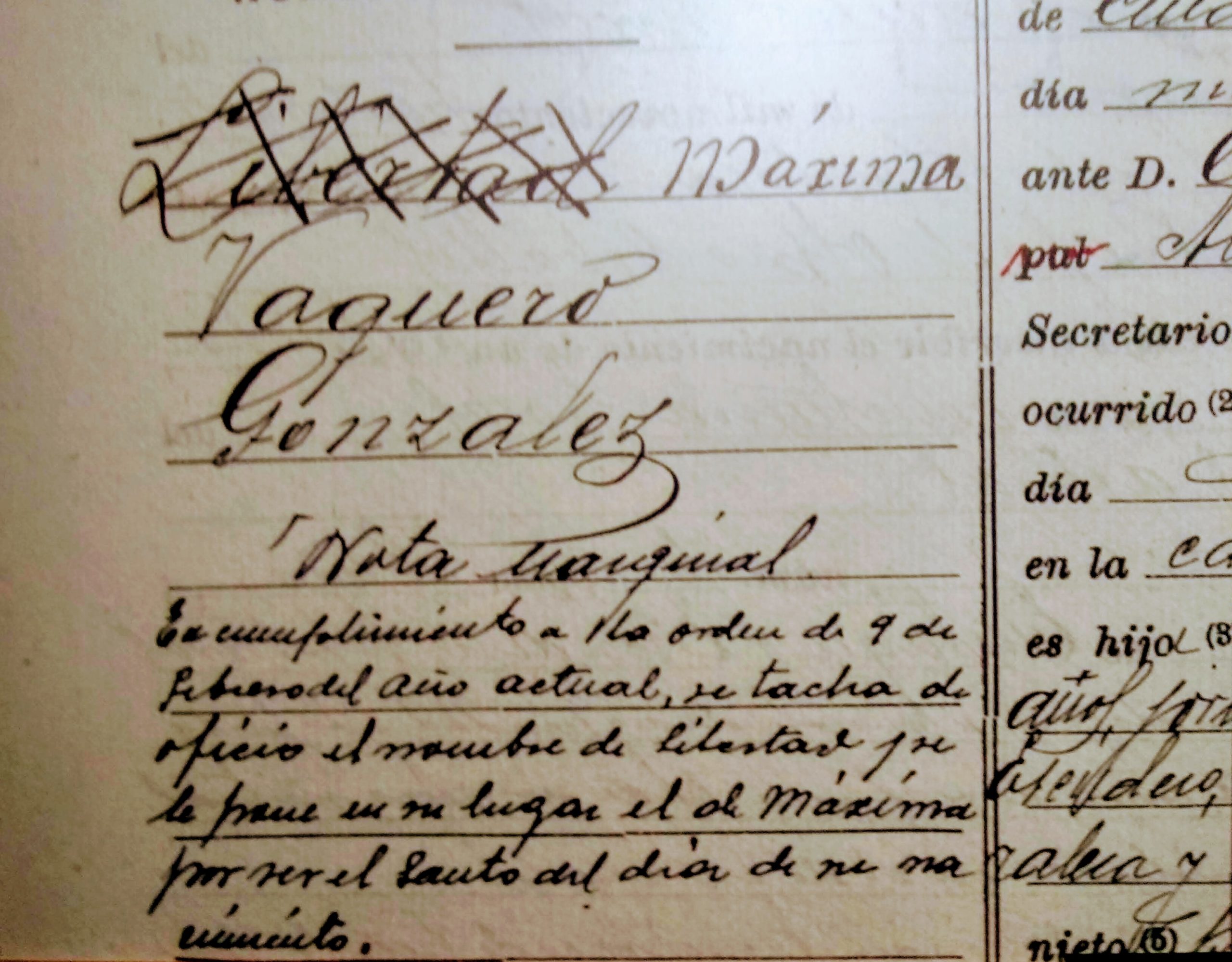
Sadly, it wasn’t only street names that were changed during this period, parents were forced to change the names of children following an order from the Ministry of Justice in favour of religious names, names like Libertad (liberty), for instance, were now considered beyond the pale, while Maria trended to a frightening degree (I’m sure you’ve noticed that women of a certain age all seem to be called Maria something-or-other).
After the transition to democracy, when Tierno Galvin became mayor of Madrid, 26 names with fascist associations were changed, with a further slew of changes coming more recently when Manuela Carmena put into effect the Ley de la Memoria Historica. Thus, we now have very modern names like the Plaza de la Memoria Trans, in memory of trans victims of violence or the Plaza de Nelson Mandela in Lavapiés. The political football of course gets kicked both ways and under our current mayor, a few names slated to be removed have remained the same. Moscardó, an area close to where I live, for instance, continues to be named after General José Moscardó Ituarte. Hopefully, we won’t see a repeat of the bizarre example set by former mayor Ana Botella, who christened one square after Margaret Thatcher!
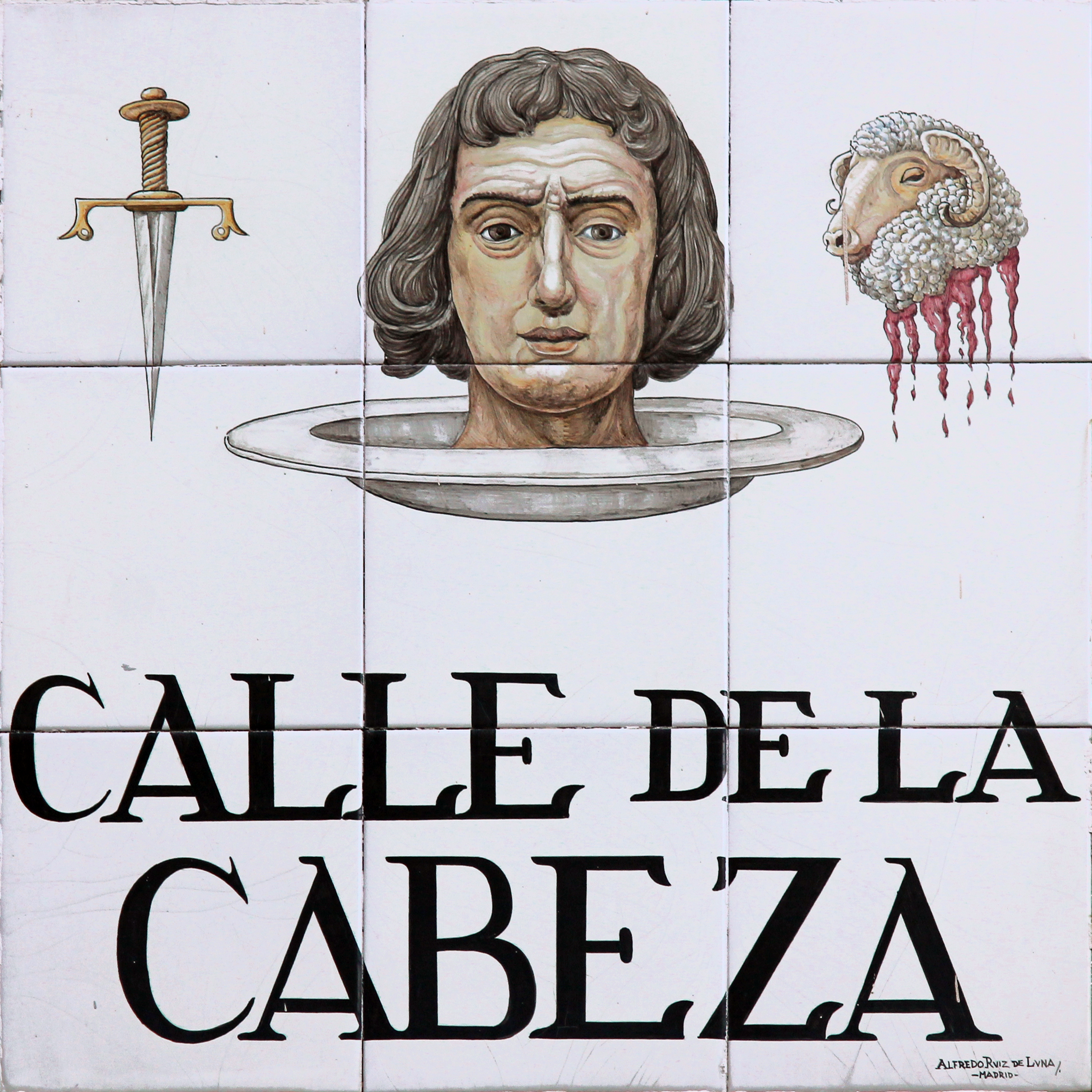
As you can see, the naming of Madrid’s streets reflects the city’s turbulent history and is likely to continue to be a controversial topic. But I think we can all agree on a fondness for Alfredo Ruiz de Luna González‘s gorgeous tiles that are not only aesthetically charming but also tell us something about the quirky history of our city’s streets. My favourite, for instance, is the Calle de la Cabeza, which depicts the bloodied head of a priest who, legend has it, was murdered for his fortune by his Portuguese servant. It’s said that years after the terrible deed was done, this servant was bringing a sheep’s head home concealed beneath his cloak from the nearby slaughterhouse. On seeing the trail of blood, a watchman confronted the murderer who pulled out his dinner only to discover that it had been transformed into the head of his victim!
If you enjoyed this article about street signs in Madrid, why not book yourself in for a unique walking tour with me, the author of The Making of Madrid?
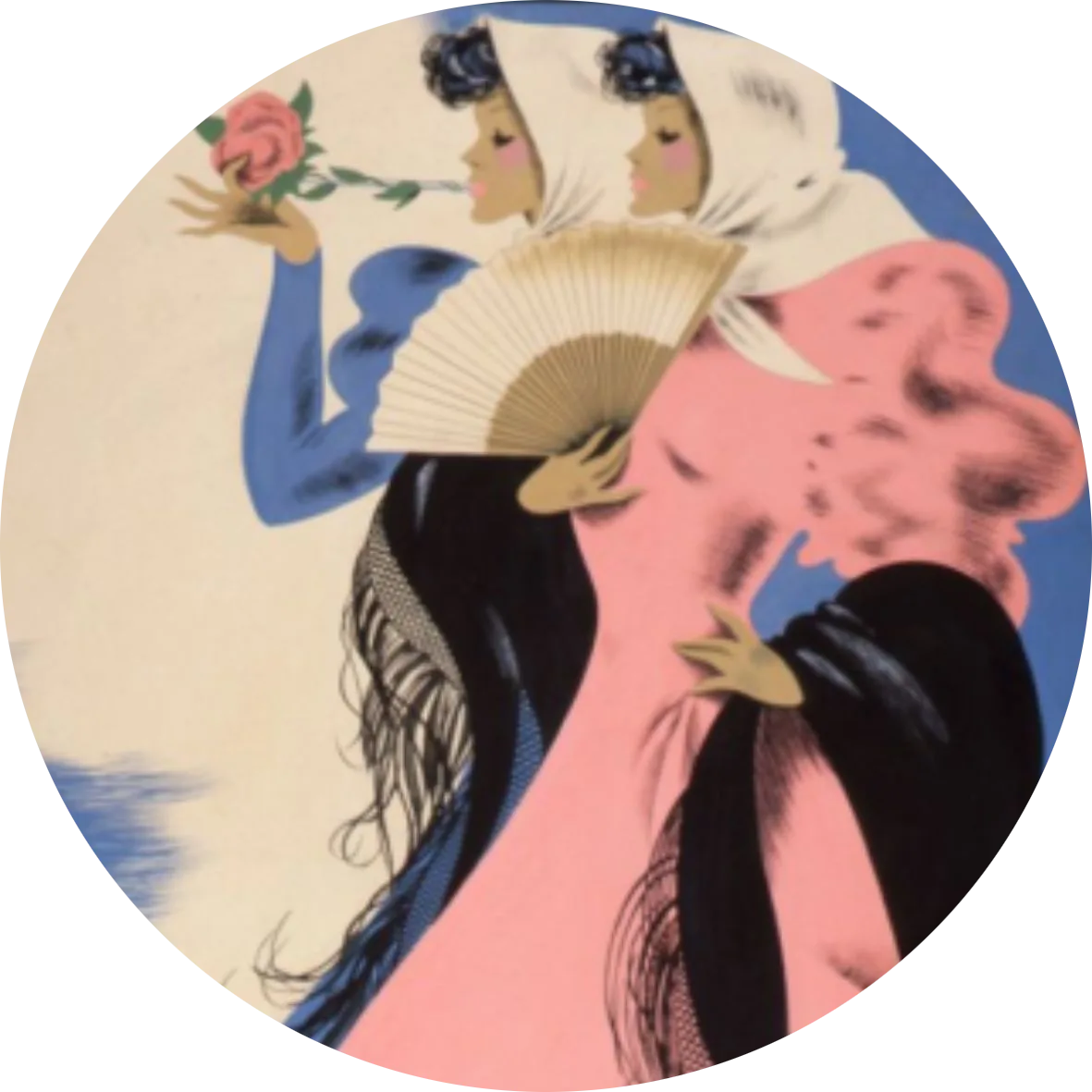
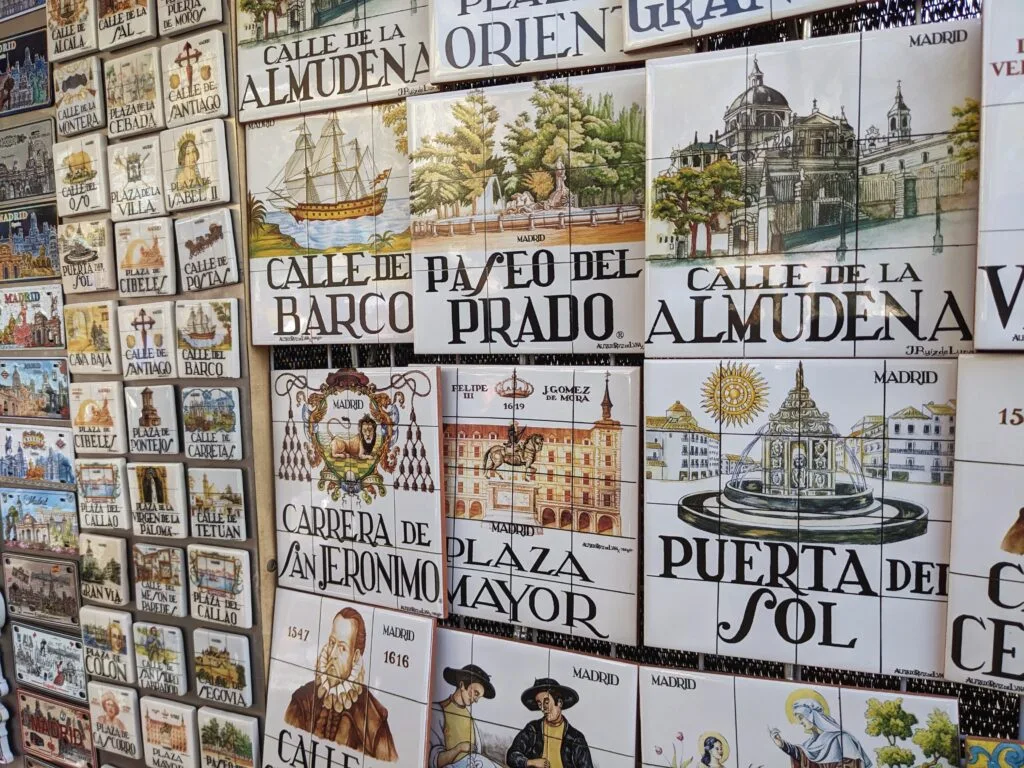
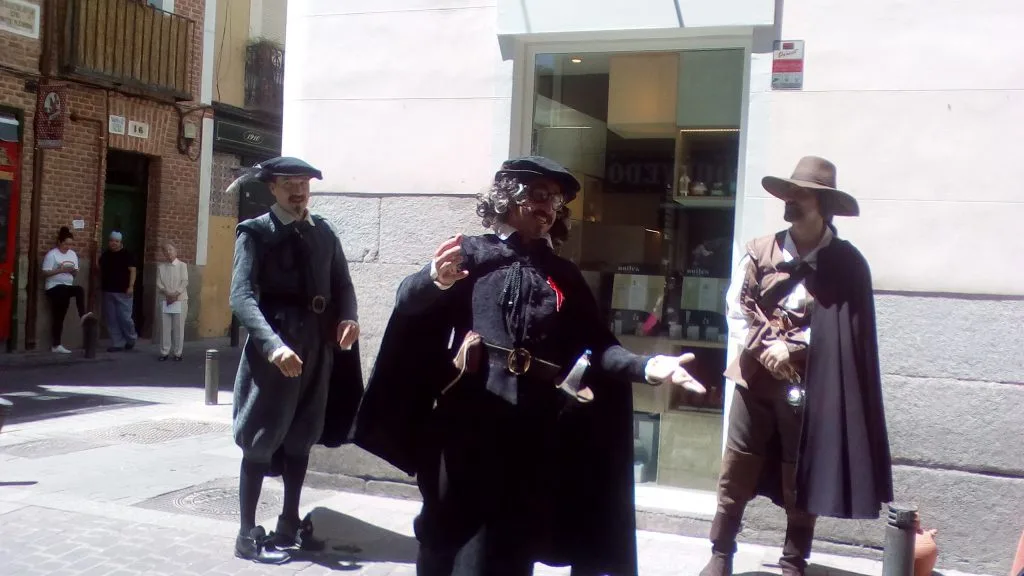
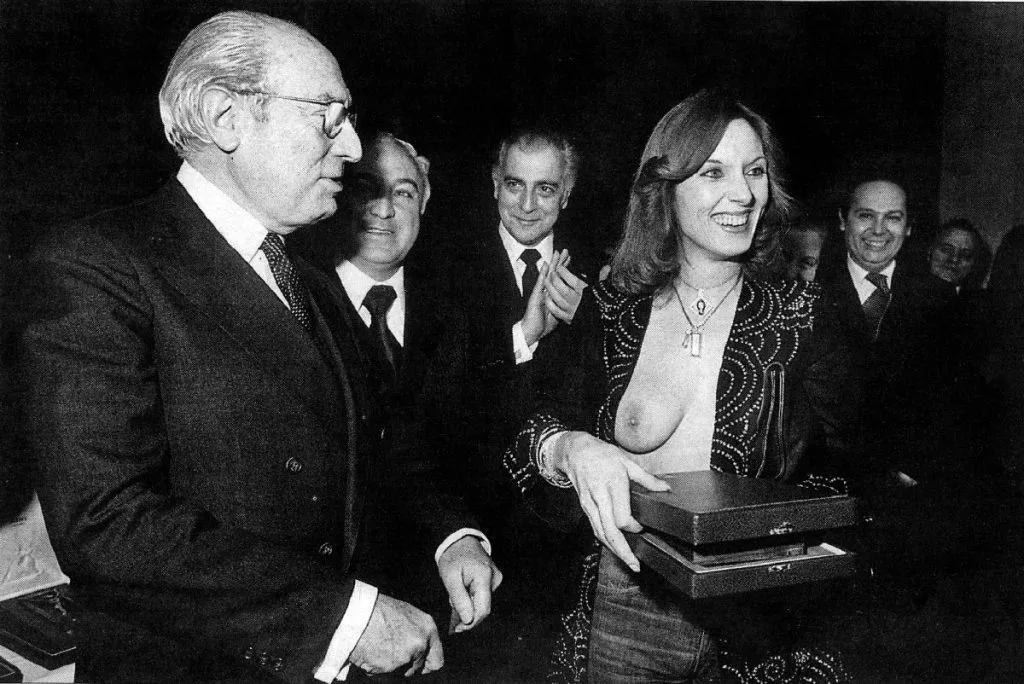
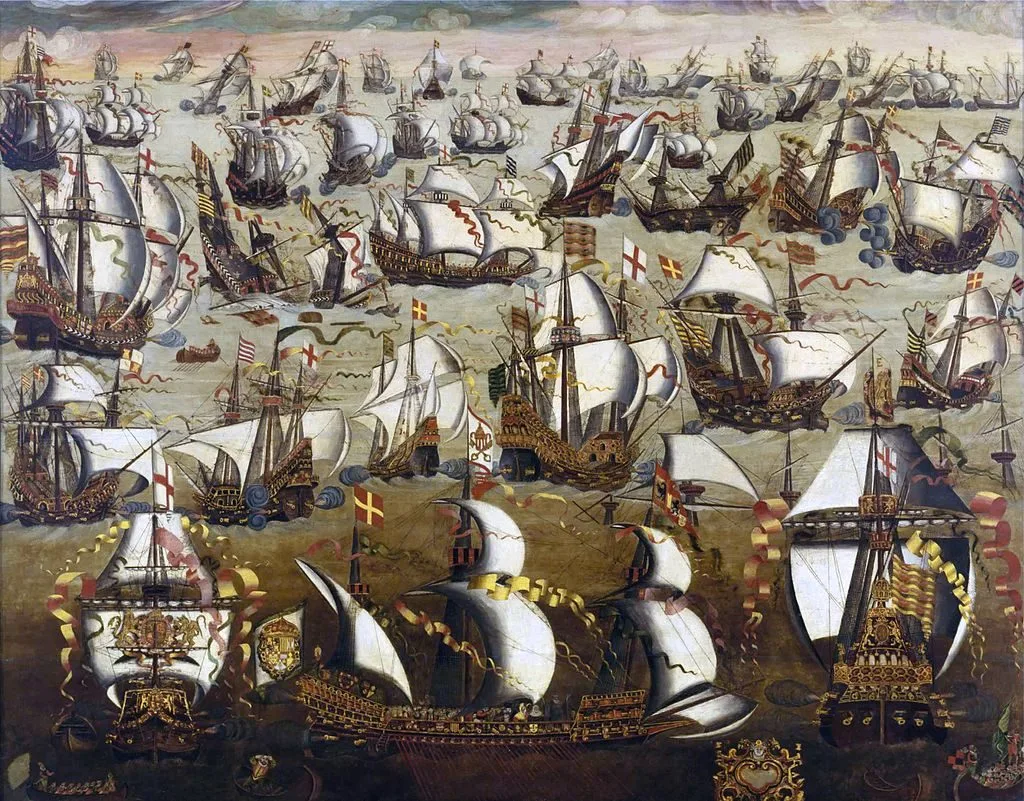
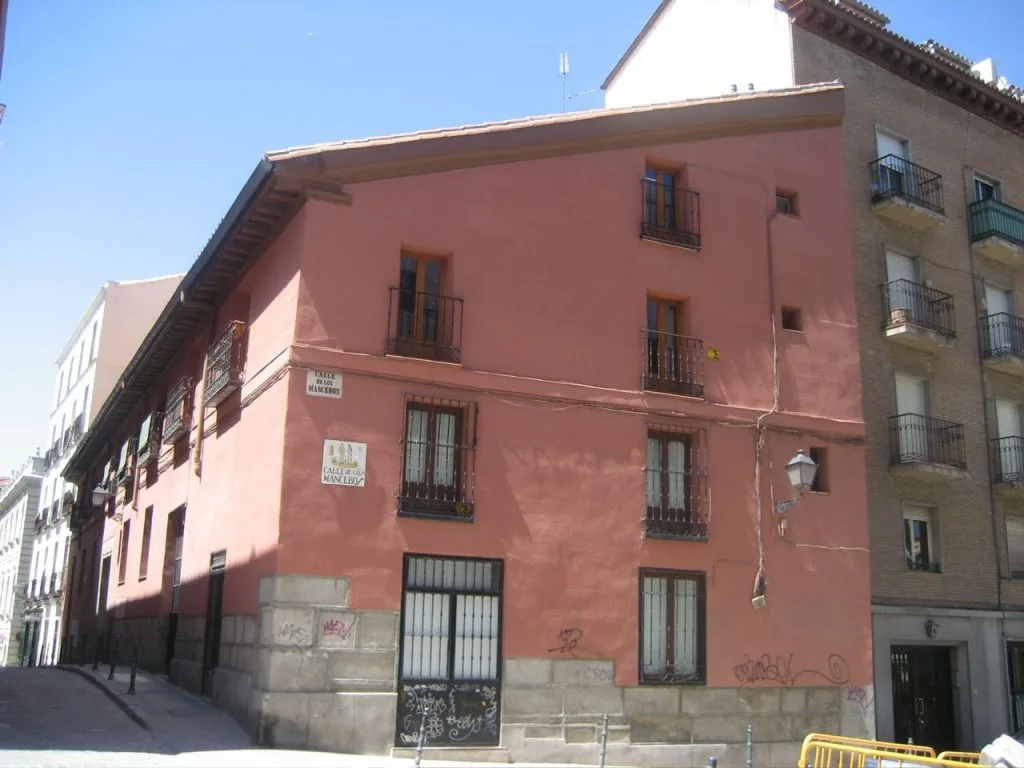
Pingback: Traveling to Madrid – I, CLAVDIA